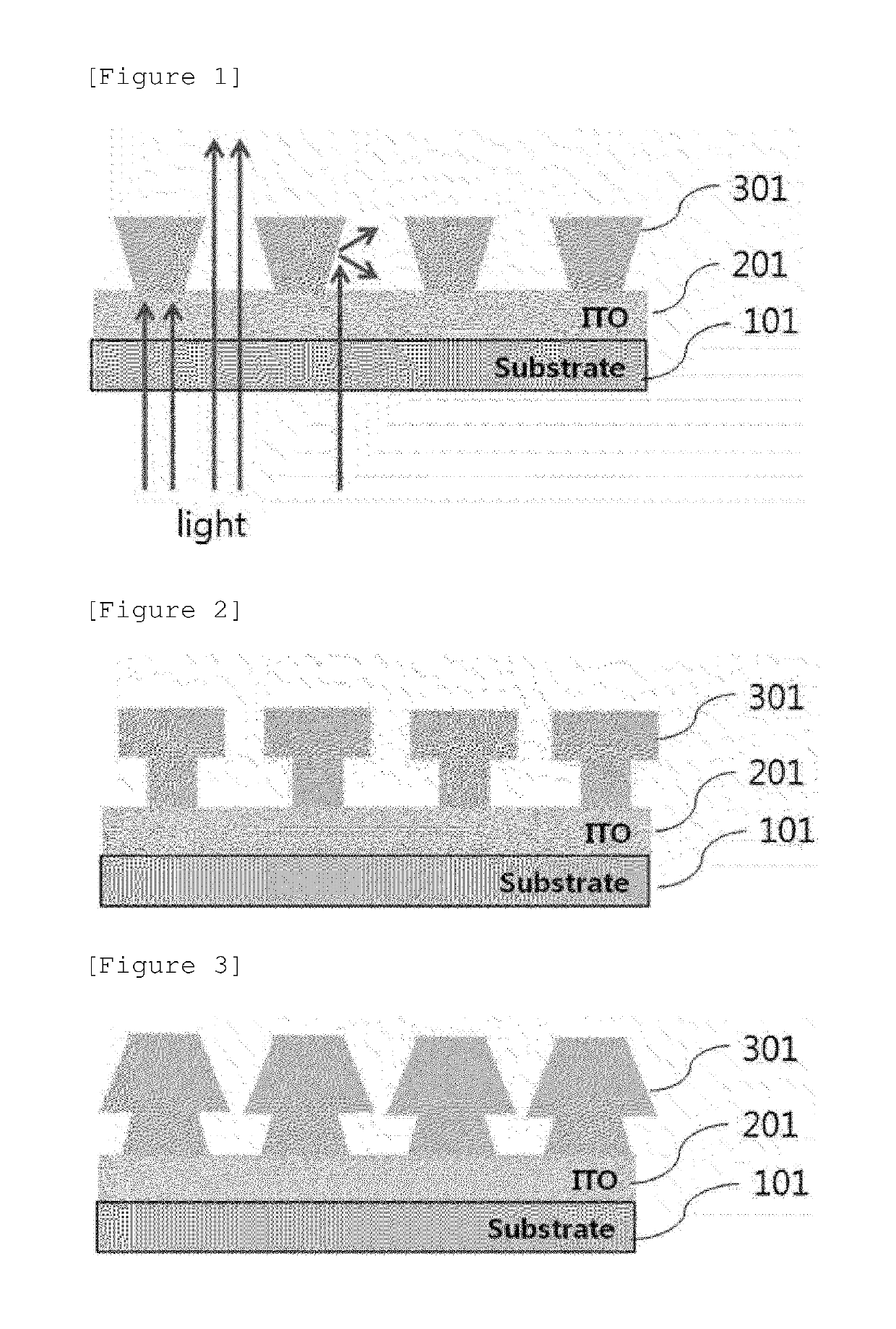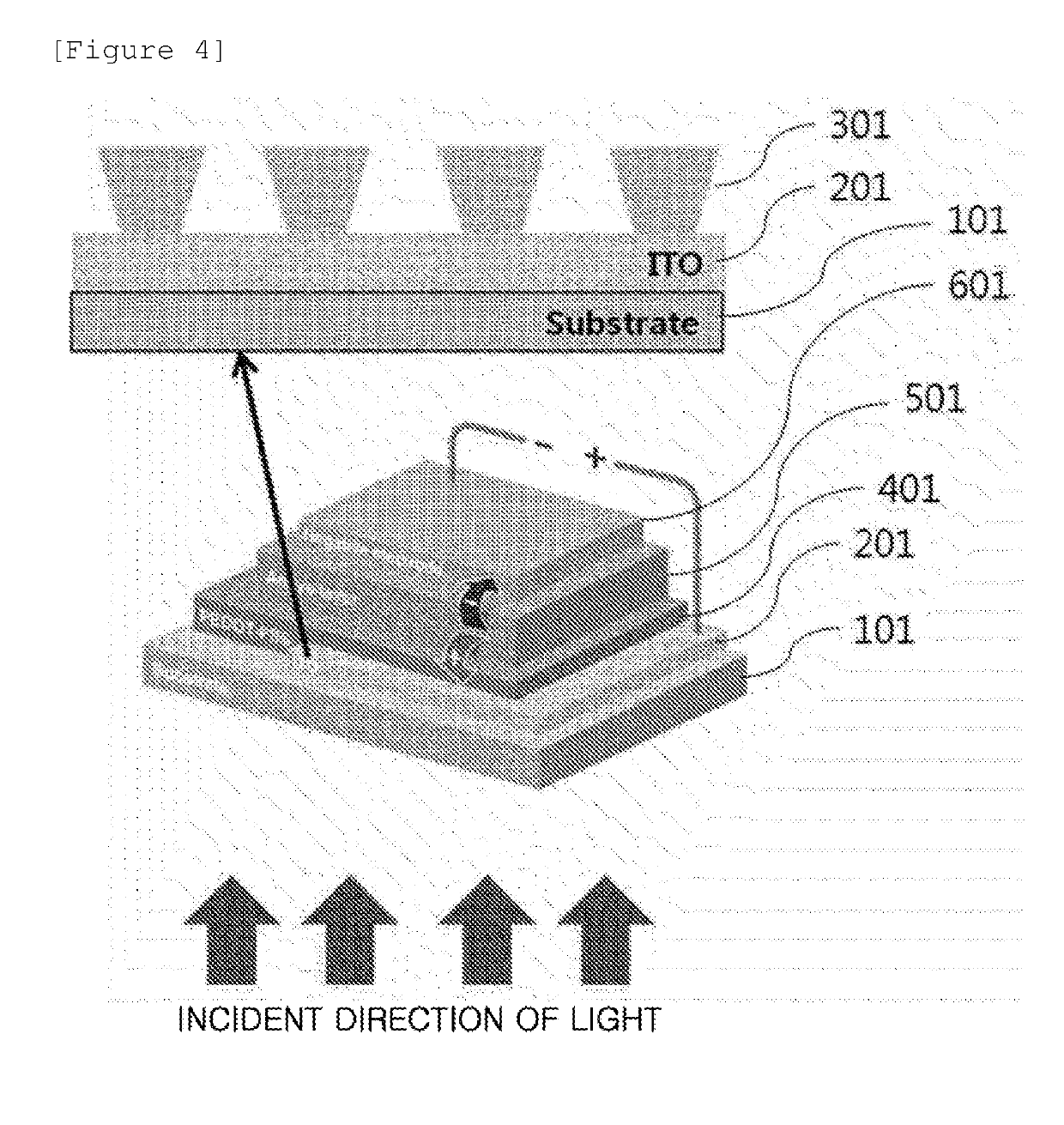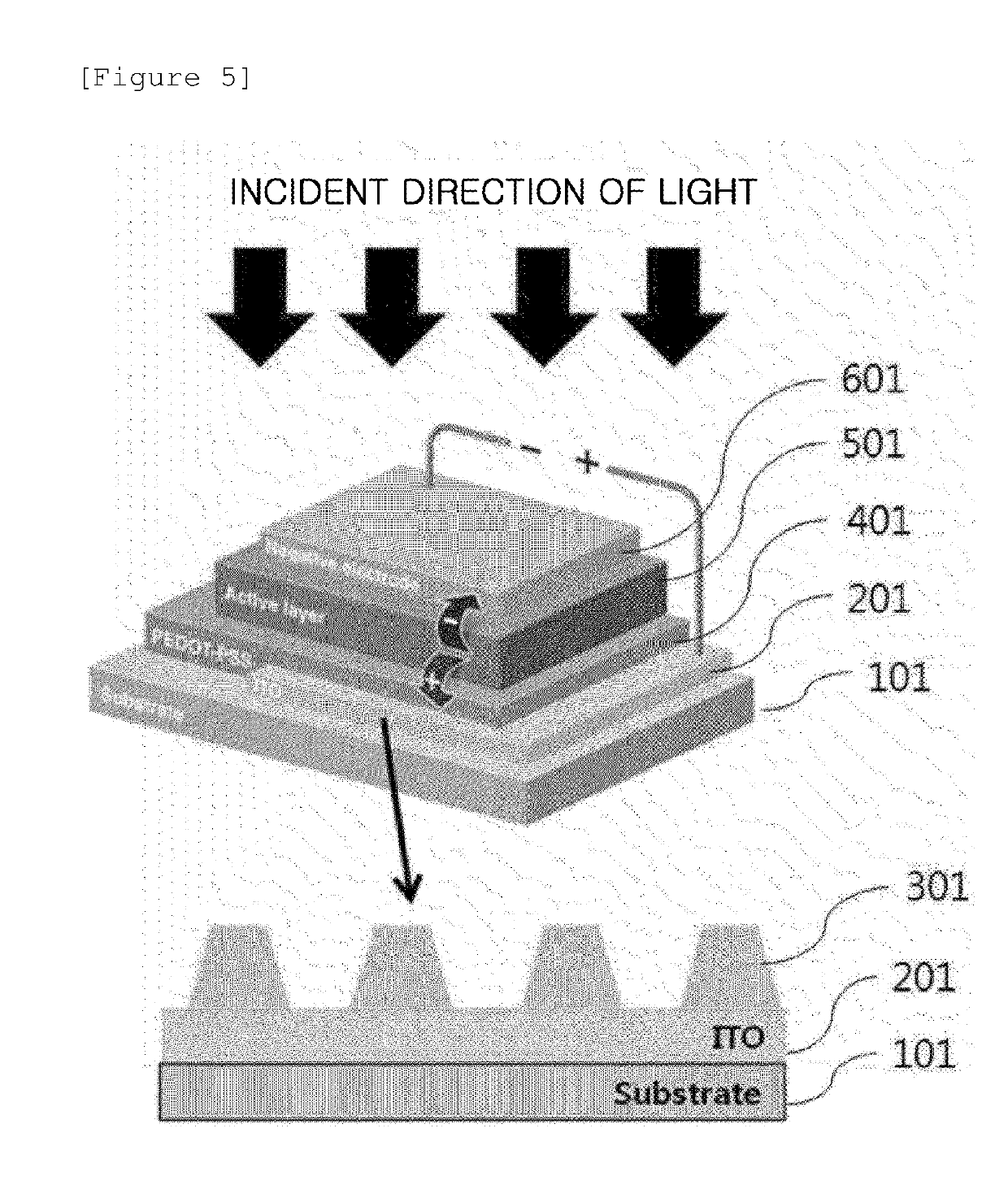Organic solar cell and method of manufacturing the same
a solar cell and organic technology, applied in the field of organic solar cells and a manufacturing method, can solve the problems of limiting the improvement of efficiency, a rapid increase in fuel expenses, and exhaustion of energy sources, and achieves the effects of increasing the quantity of light, high light absorption efficiency, and high efficiency
- Summary
- Abstract
- Description
- Claims
- Application Information
AI Technical Summary
Benefits of technology
Problems solved by technology
Method used
Image
Examples
preparation example 1
[0119]On the glass / ITO / Cu / Al substrate where ITO, Cu, and Al were sequentially deposited in the thickness of 150 nm, 200 nm, and 30 nm, respectively, on the glass, the hexagonal mesh pattern having the line width of about 7 μm was formed by the photolithography method using the novolac-based positive photoresist (PR). Thereafter, after etching was performed by using the phosphoric acid / nitric acid / acetic acid-based etchant at 45° C. for 9 seconds, the shape was observed by the optical microscope, and the cross-section was observed by the scanning electron microscope (SEM). Thereafter, the novolac photoresist was removed by using the organic amine-based stripper to manufacture the transparent electrode including the ITO / inverse taper metal auxiliary electrode.
[0120]FIG. 7 is an optical microscope picture immediately after PR patterning is performed by the method of Preparation Example 1, and FIG. 8 is a SEM cross-sectional picture immediately after PR patterning and Cu / Al etching are...
example 1
[0121]On the transparent electrode including the metal auxiliary electrode, in which the ratio of the line widths of the lower surface and the upper surface is 1:2, manufactured by the same method as Preparation Example 1, the PEDOT:PSS solution was applied, and heat treatment was then performed at 140° C. for 15 minutes. After the solution of P3HT and PCBM mixed at the ratio of 1:0.7 was applied on PEDOT:PSS to form the photoactive layer of about 220 nm, the Al electrode was deposited on the photoactive layer under 1×10−7 torr, and then subjected to heat treatment at 150° C. for 10 minutes to manufacture the organic solar cell.
example 2
[0122]On the transparent electrode including the metal auxiliary electrode, in which the ratio of the line widths of the lower surface and the upper surface is 1:3, manufactured by the same method as Preparation Example 1, the PEDOT:PSS solution was applied, and heat treatment was then performed at 140° C. for 15 minutes. After the solution of P3HT and PCBM mixed at the ratio of 1:0.7 was applied on PEDOT:PSS to form the photoactive layer of about 220 nm, the Al electrode was deposited on the photoactive layer under 1×107 torr, and then subjected to heat treatment at 150° C. for 10 minutes to manufacture the organic solar cell.
PUM
 Login to View More
Login to View More Abstract
Description
Claims
Application Information
 Login to View More
Login to View More - R&D
- Intellectual Property
- Life Sciences
- Materials
- Tech Scout
- Unparalleled Data Quality
- Higher Quality Content
- 60% Fewer Hallucinations
Browse by: Latest US Patents, China's latest patents, Technical Efficacy Thesaurus, Application Domain, Technology Topic, Popular Technical Reports.
© 2025 PatSnap. All rights reserved.Legal|Privacy policy|Modern Slavery Act Transparency Statement|Sitemap|About US| Contact US: help@patsnap.com



